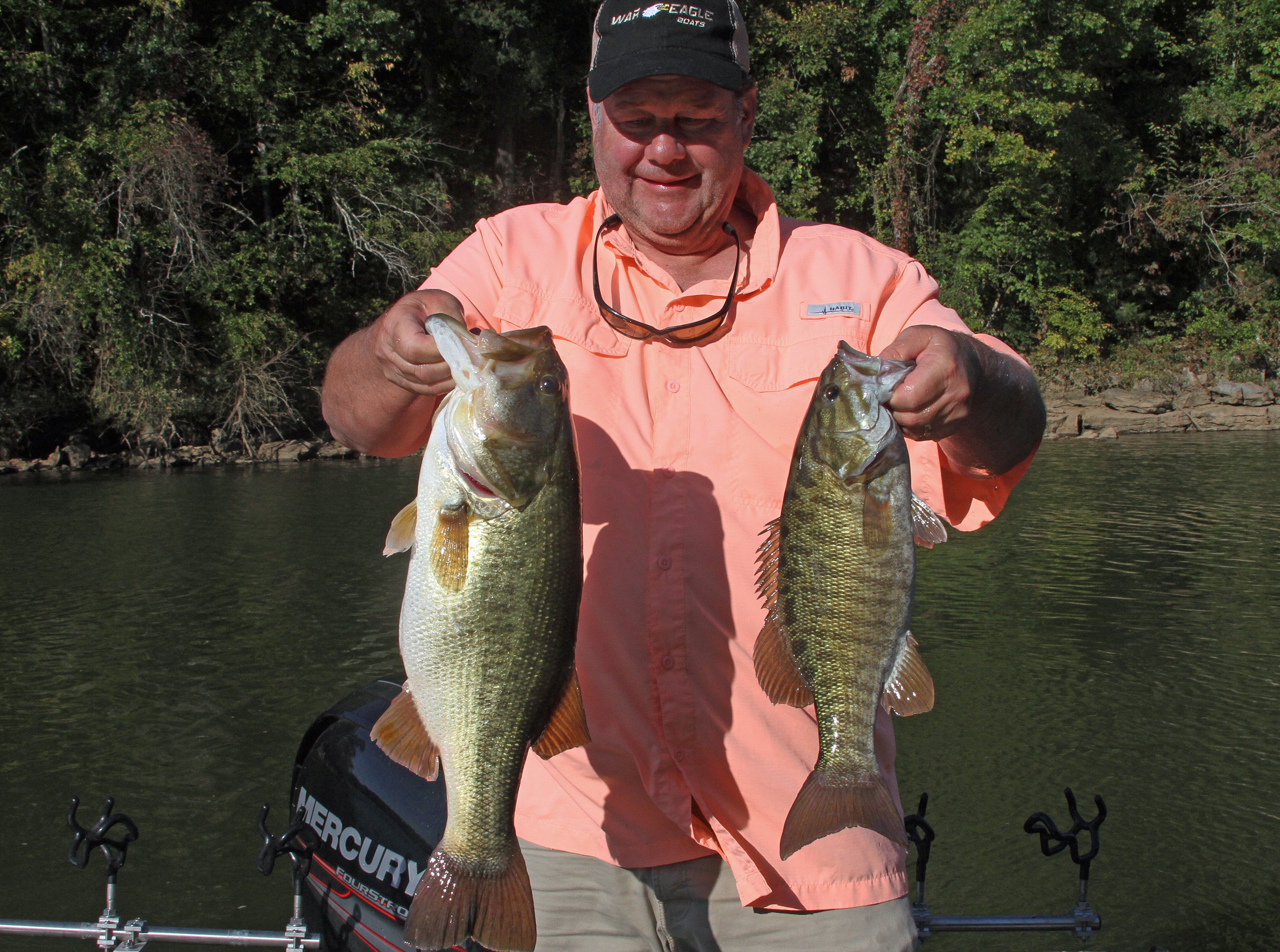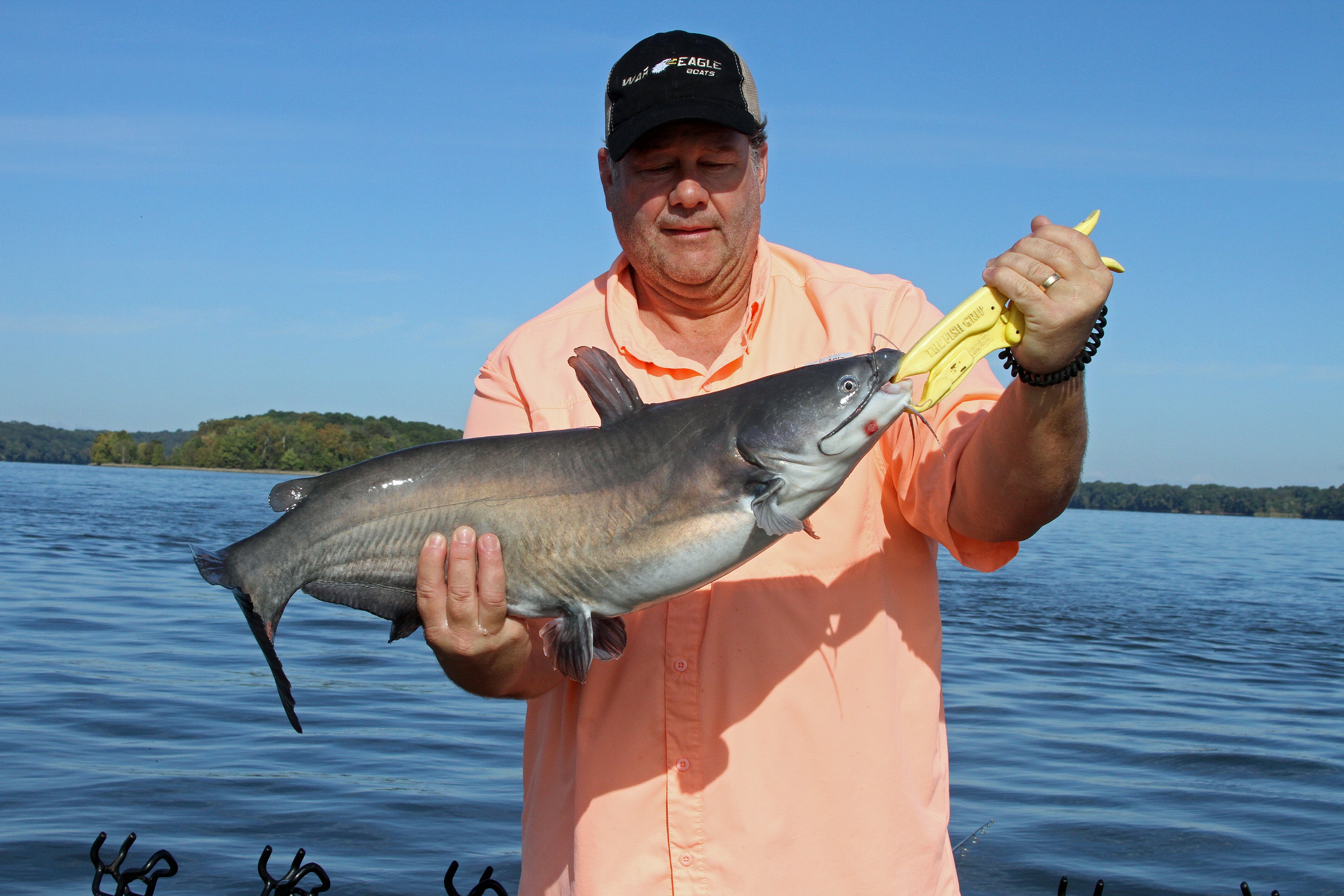By DAVID RAINER, Alabama Department of Conservation and Natural Resources
Wisps of fog danced slowly on the surface of the Tennessee River near Muscle Shoals as Brian Barton scanned a creek off the main river for the telltale signs of the bait we sought for a day of live-bait fishing on Pickwick Reservoir. Threadfin shad and gizzard shad were the targets as Barton and I looked for the bait flipping or tailing.
When Barton saw promising signs, he threw his small cast net into the dark waters in hopes of quickly securing enough bait for a day of fishing. However, the cold front that produced the fog made finding bait a little more difficult. Barton persisted with his casts and finally had enough shad in the baitwell to make the run to one of his favorite fishing spots, especially with live bait. Of course, the captured baitfish were for use on Pickwick only, since Alabama’s Wild Baitfish Regulation bans transporting live baitfish away from waters where they were caught.
On Pickwick, the so-called community holes get hammered regularly by bass fishermen with artificial lures, which makes the fish especially finicky. Barton’s live-bait presentation can turn a reluctant fish into an active feeder.
“This time of year, I look in the mouths of the creeks downriver to find bait,” Barton said. “That can be tough sometimes. You can also buy shiners, but the river bait is the best. There’s always plenty of bait at the tailrace. The thing is you usually get bigger bait in the middle part of the river. At times, the bait at the tailrace can be really small, and I’ll have to go to a cast net with a smaller mesh.”
Obviously, Barton’s guide service appeals to the novice or young angler who just wants to catch fish by any means necessary.
“This is what I call a family fun outing,” Barton said. “It’s not the skill required to use artificial baits and other lures. You catch lots of fish. Even with the cold front, we probably caught 150 pounds of fish. You typically catch lots of numbers. It’s fantastic in the fall and mid-spring. It’s something anybody can do.”
Barton can take three customers in his 22-foot War Eagle boat. He can also usually find another guide if the family or fishing party is larger than three.
After a chilly boat ride to the middle of Pickwick, a 43,000-acre reservoir, Barton pulled back the throttle and lowered his trolling motor that will hold the boat in one spot. The casting target was a pipeline that crosses the river. Rip rap covers the pipe and provides a current break for the fish.
“Never cast upriver,” he said. “You’re guaranteed to get hung if you do. Cast at a quarter angle behind the boat and let the current drift the bait to the fish. If you don’t get a bite right away, let out a little more line and let the bait get a little farther down river.”
Despite the possibility of hooking a monster blue catfish, Barton believes in light tackle. He uses 8-pound test monofilament line with a high-durability finish to stand up to the rigors of fishing structure. A No. 2 or No. 4 bait hook, depending on the size of the bait, is tied with a Palomar knot, and the smallest weight he can get by with, depending on the current, is pinched about 2 feet up the line.
“This gives the most natural presentation,” Barton said. “If you come to these spots with 3- and 4-ounce sinkers, you’d better bring a box of 50 hooks because you’re going to lose a lot of tackle.”








